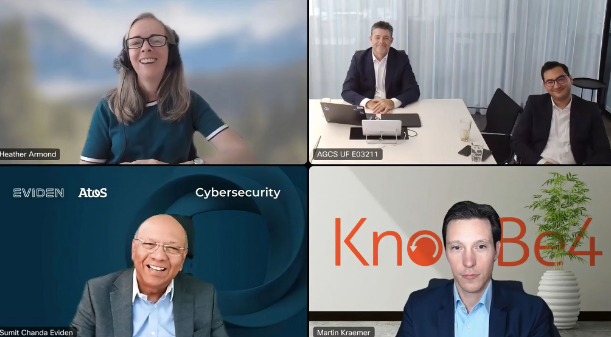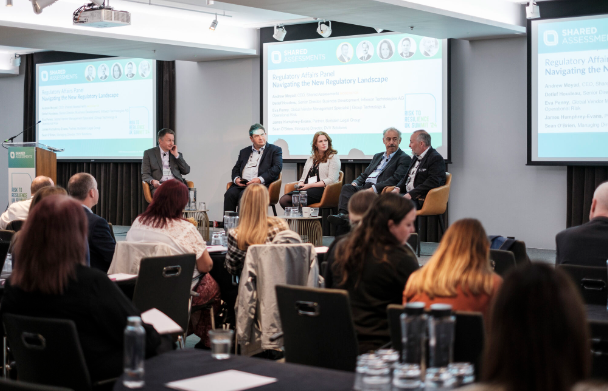By Julian Meyrick, Managing Partner & Vice President, Security Strategy Risk & Compliance, Security Transformation Services, IBM Security
Cyber threat hunting — proactively chasing increasingly sophisticated and pervasive cyberattacks — has been around for some time. However, existing approaches of cyber threat hunting rely on repeated and tedious knowledge encoding on specific data platforms, which can be very time-consuming.
In cybersecurity, time is of the essence. Every hour it takes to detect and respond to a threat leaves attackers more time to do damage. Unfortunately, rather than benefiting from the threat-hunting community’s collective knowledge and sharing code, cybersecurity professionals end up working in relative isolation and rewriting the same programs over and over with each new attack. In this context, the value of an open-source threat-hunting programming language could help solve that issue.
Kestrel Threat Hunting Language offers threat hunters a means to perform cyber reasoning and threat discovery much faster and easier than ever before. Developed jointly by IBM Research and IBM Security and based on years of experimentation in DARPA’s Transparent Computing program’s adversarial engagements, Kestrel offers Security Operations Center (SOC) analysts and threat hunters a domain-specific language that lets them devote more time to figuring out what to hunt, as opposed to how to hunt.
Letting threat hunters do what they do best
Cyber threat hunting is intended to serve as a countermeasure against today’s threats, many of which are built dynamically and customized to attack specific targets. These stealthy attacks can circumvent existing security measures at various levels and cannot be fully captured by pre-programmed detection systems and analytics.
Even with the influx of numerous open-source and commercial investigation tools, cyber threat hunting lacks the efficiency needed to be truly effective. Time and intelligence that should be focused on reasoning about sophisticated threats is instead spent on mundane tasks, such as crafting queries for different data sources, interpreting their results, and recording those results in spreadsheets.
IBM designed Kestrel to codify different steps and flows involved in threat hunting. That includes understanding the security measures in the target environment, thinking about potential threats that escape existing defenses, obtaining useful observations from system and network activities, developing threat hypotheses, revising threat hypotheses iteratively with the last two steps, and confirming new threats.
As a language for threat hunters to express what they are hunting, Kestrel helps hunters organize their thoughts about threat hypotheses around entities, which include numerous identifiable systems or network objects.
Under the hood, Kestrel runtime automatically reassembles an entity using pieces of information from different records or logs that describe different aspects of that entity. Kestrel also proactively asks data sources for additional information about different entities in order to ensure threat hunters have all of the information available to track down root causes and impacts of suspicious activity, as well as create and revise threat hypotheses as needed.
Security in community
Kestrel uses Structured Threat Information Expression (STIX), an open-standard for expressing and exchanging cyber threat data and intelligence. Kestrel runs on top of STIX-Shifter — another open source project by IBM Security — to automatically compile threat-hunting steps down to the native languages that the different data sources speak and execute. Beyond patterns, Kestrel abstracts hunting knowledge codified in analytics and hunting flows. Shareable, composable and reusable threat-hunting flows are critical — look no further than the SolarWinds attack to understand the importance of sharing threat intelligence and analysis across multiple organizations.
Ultimately, Kestrel will give threat hunters the ability to focus on the most interesting aspect of their work — the thrill of the hunt. In doing so, it will make cyber threat hunting more exciting that ever, and allow cybersecurity professionals to spend their time and energy untangling sophisticated threats and raising the level of skill and effort required to launch successful attacks in the future.


You may also like

Chairwoman Natalia Oropeza in Brandeins Magazine
In an interview with Dorit Kowitz, Natalia dives deep into the pressing issues facing the cybersecurity landscape, explaining how the Charter of Trust bundles the expertise of different businesses across several regions to stay resilient in the face of evolving threats. As Natalia Oropeza says: "We all win if cybercrime doesn’t win."
Here are three key insights from her interview:
🔑 Collaboration is essential: No single organization can tackle cyber threats alone. The Charter of Trust is a prime example that businesses nowadays are more transparent when it comes to attacks and that sharing information in this field can be beneficial.
🔑 Addressing the digital skills gap: The Charter of Trust is working to address the global shortage of cybersecurity professionals by encouraging diversity and actively promoting opportunities for women to join the field.
🔑 Unified regulations: Harmonizing global cybersecurity standards will reduce vulnerabilities, helping businesses and governments combat threats more effectively.
The full interview is available here: https://lnkd.in/gRm6ZDGC


Cybersecurity Awareness Month
The complexity and urgency of this topic gathered a lot of interest, with 600+ attendees throughout the whole panel, which was composed of Jon-Paul Jones, COO at AZ Commercial, Firas Ben Hassan, GenAI expert & Manager of AllianzGPT at AZ Technology, Dr. Martin J. Krämer, External Security Awareness Advocate at KnowBe4, and Dr Sumit Chanda, Global CISO at Eviden & Chair of the Global External Engagement Working Group at the Charter of Trust.
We are pleased to see Dr. Sumit Chanda from Eviden bringing in his unique CISO insight on what these emerging technologies mean in day-to-day cybersecurity practices and bringing in the Charter of Trust perspective on this topic as well.
Thank you, Ervin Cihan and Haydn Griffiths for inviting other CoT Partners and for the great initiatives that Allianz is putting together within this year’s Security Awareness Month. And special thanks to Heather Armond for the great moderation.


UK/EU Summit - “Risk to Resilience”
💡Under the theme “Risk to Resilience” the first event of this series was held in London and brought together professionals from different industries and regions. Detlef participated in the panel about the complex regulatory landscape and emphasized that new legislation like the EU AI Act, DORA and Hashtag#NIS2 continue to push the standard of care on cybersecurity and other risks.
Thanks to Shared Assessments for organizing such an amazing event and inviting the Charter of Trust to participate in this high-class panel alongside Andrew Moyad, CEO at Shared Assessments.



